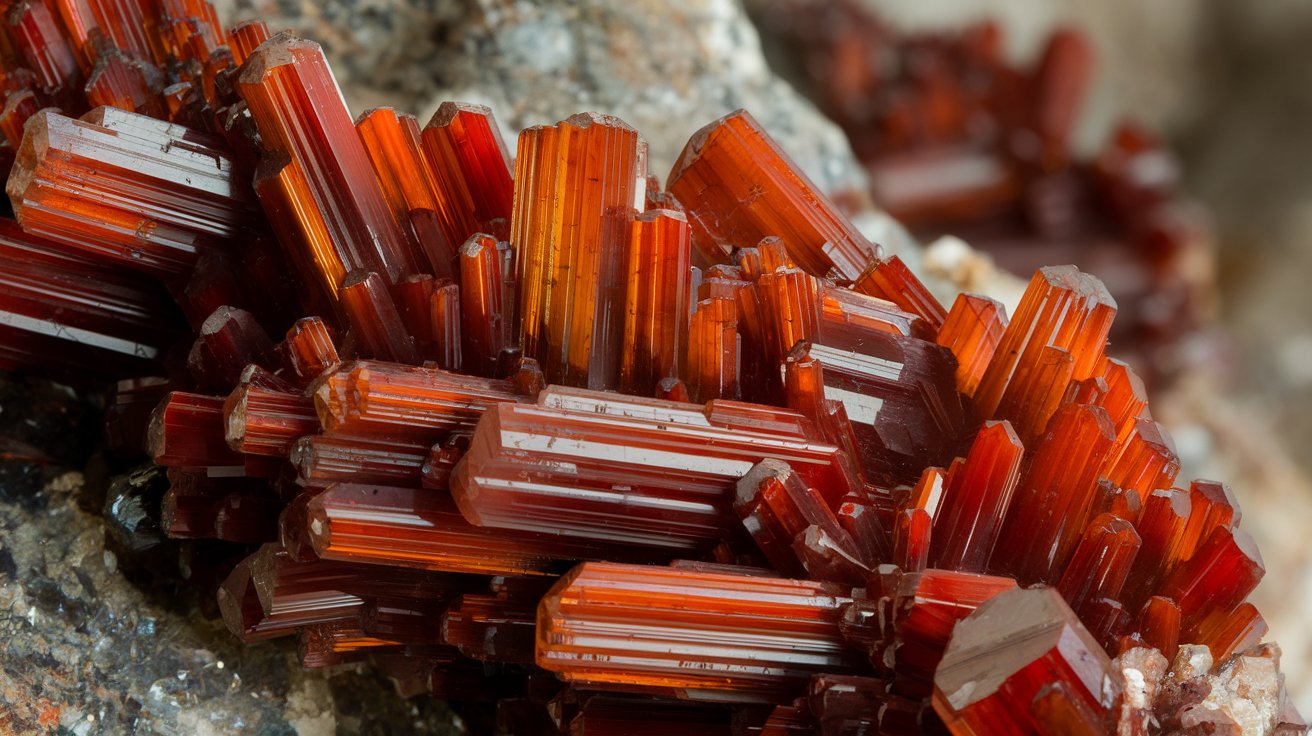
What is Brezinaite? Brezinaite is a rare mineral that captures the curiosity of geologists and mineral enthusiasts alike. Named after Czech mineralogist Václav Brezina, this mineral was first discovered in the Toluca meteorite in Mexico. Composed primarily of chromium and sulfur, Brezinaite forms in tiny, needle-like crystals. Its unique properties and extraterrestrial origin make it a subject of fascination. Found in meteorites, Brezinaite is not something you stumble upon in your backyard. This mineral is a testament to the wonders of space and the secrets it holds. Ready to learn more? Here are 30 intriguing facts about Brezinaite that will expand your knowledge of this cosmic gem.
Key Takeaways:
- Brezinaite is a rare mineral found in meteorites, named after a Czech mineralogist. Its unique composition and properties provide valuable insights into space conditions and the early solar system.
- With a metallic luster and a hardness of 5.5 on the Mohs scale, Brezinaite is primarily used in scientific research and as a valuable specimen for collectors. Its extraterrestrial origin makes it a fascinating subject for both scientists and mineral enthusiasts.
What is Brezinaite?
Brezinaite is a rare mineral that has captured the interest of geologists and mineral enthusiasts alike. Named after the Czech mineralogist Karel Brezina, this mineral has unique properties and a fascinating history. Let's dive into some intriguing facts about Brezinaite.
Origin and Discovery
Understanding where Brezinaite comes from and how it was discovered can give us a glimpse into its rarity and significance.
- Brezinaite was first discovered in 1969 in the Toluca meteorite in Mexico.
- The mineral was named after Karel Brezina, a Czech mineralogist known for his work in the field.
- It is primarily found in meteorites, making it an extraterrestrial mineral.
- The Toluca meteorite, where Brezinaite was first identified, fell to Earth over 10,000 years ago.
- Brezinaite is one of the few minerals that have been identified in meteorites but not in terrestrial rocks.
Chemical Composition
Brezinaite's chemical makeup is what sets it apart from other minerals. Its unique composition contributes to its rarity and special properties.
- Brezinaite has the chemical formula Cr3S4.
- It is composed mainly of chromium and sulfur.
- The mineral belongs to the thiospinel group, a category of minerals with a specific crystal structure.
- Brezinaite's chromium content gives it a metallic luster and a distinct appearance.
- The mineral's structure is similar to that of other spinels, but its composition makes it unique.
Physical Properties
The physical characteristics of Brezinaite make it an interesting subject for study. These properties include its appearance, hardness, and other measurable traits.
- Brezinaite has a metallic luster, making it shiny and reflective.
- The mineral is opaque, meaning light does not pass through it.
- It has a hardness of 5.5 on the Mohs scale, making it relatively hard but not as hard as diamonds.
- Brezinaite crystals are usually small, often less than 1 millimeter in size.
- The mineral is brittle, meaning it can break or shatter easily under stress.
Geological Significance
Brezinaite's presence in meteorites and its unique properties make it significant in the field of geology.
- The mineral provides clues about the conditions in space where meteorites form.
- Studying Brezinaite helps scientists understand the processes that occur in the early solar system.
- The mineral's composition can reveal information about the temperature and pressure conditions in meteorites.
- Brezinaite is used as a marker to identify specific types of meteorites.
- The study of Brezinaite contributes to our knowledge of extraterrestrial geology.
Uses and Applications
While Brezinaite is not commonly used in everyday applications, it has some specialized uses in scientific research.
- The mineral is primarily used in research to study meteorites and space conditions.
- Brezinaite's unique properties make it a subject of interest in mineralogical studies.
- It is sometimes used as a reference material in laboratories for calibrating instruments.
- The mineral's rarity makes it a valuable specimen for collectors.
- Brezinaite can also be used to study the distribution of chromium in meteorites.
Fun Facts
Here are some additional interesting tidbits about Brezinaite that highlight its uniqueness and rarity.
- Brezinaite is one of the few minerals that have been found only in meteorites.
- The mineral's name is sometimes misspelled as "Brezinite" due to its unusual spelling.
- Brezinaite has been found in only a handful of meteorites worldwide.
- The mineral's discovery in the Toluca meteorite was a significant event in the field of meteoritics.
- Brezinaite's extraterrestrial origin makes it a fascinating subject for both scientists and mineral enthusiasts.
The Fascinating World of Brezinaite
Brezinaite, a rare mineral, has captured the interest of geologists and mineral enthusiasts alike. Found mainly in meteorites, this mineral offers a glimpse into the cosmos. Its unique composition, primarily consisting of chromium and sulfur, sets it apart from other minerals. Brezinaite's discovery in 1969 by Czech mineralogist Václav Brezina added a new chapter to mineralogy.
Understanding its formation helps scientists learn more about the conditions in space. Its rarity makes it a prized specimen for collectors. The mineral's metallic luster and crystal structure are visually striking, adding to its allure.
Brezinaite isn't just a mineral; it's a window into the universe's mysteries. Whether you're a seasoned geologist or a curious learner, this mineral offers something intriguing. Keep exploring, and who knows what other cosmic secrets you'll uncover.
Frequently Asked Questions
Was this page helpful?
Our commitment to delivering trustworthy and engaging content is at the heart of what we do. Each fact on our site is contributed by real users like you, bringing a wealth of diverse insights and information. To ensure the highest standards of accuracy and reliability, our dedicated editors meticulously review each submission. This process guarantees that the facts we share are not only fascinating but also credible. Trust in our commitment to quality and authenticity as you explore and learn with us.


